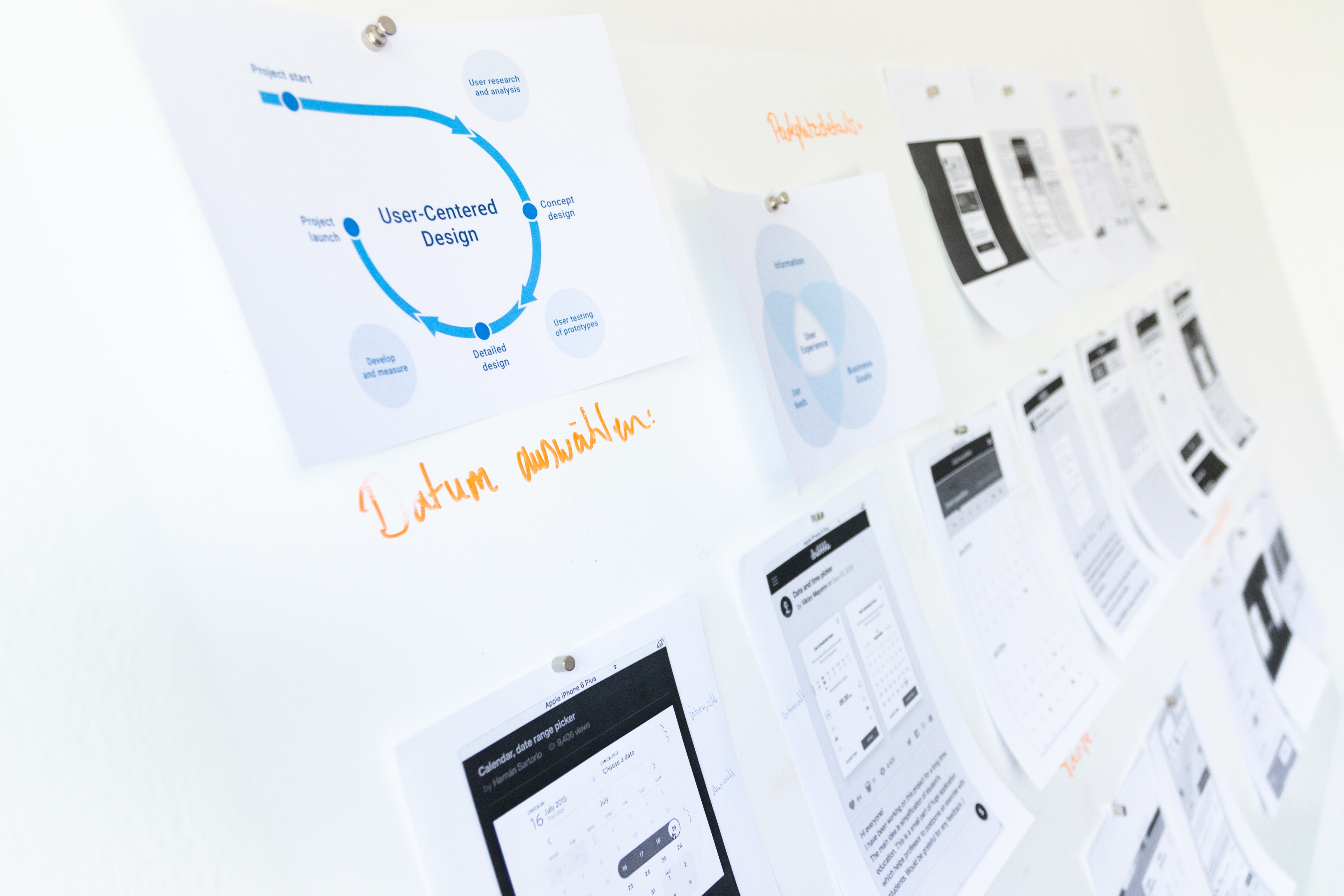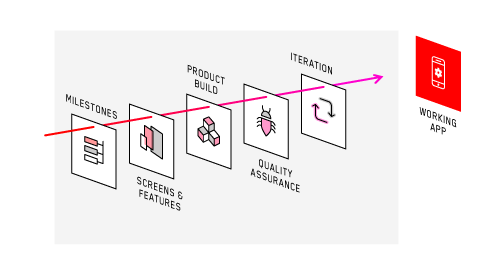The Value of a Systemic Design Approach
The Parable
There’s a story that my father used to tell me which has shaped how I approach problems.
Once upon a time, a married couple gave birth to a small boy. Over the years they realized that he was quite dumb, and lacked an ability to think critically.
One day, the parents had to leave their home for a few days to go see some sick relatives. Because the journey was rather long and dangerous, they didn’t want to bring their son. They were afraid that he would starve if he was alone, so they asked a baker to make a special loaf of bread shaped like a large ring. The mother then put the ring of bread over the boy’s head, so it was looped around his neck.
“When you get hungry,” she said, “just look down and eat the bread right under your nose. There’s enough bread for you to last an entire week without us.” The boy agreed and the parents left.
After five days, the parents returned back to their village. They were horrified to hear that their son had died of starvation. When they ran back into the house, they saw what had happened - only the front half of the bread ring had been eaten. The boy didn’t think to turn the bread ring, and as a result, he starved when there was food in plain reach.
Although this story is extreme, the underlying message is broadly applicable. This story exemplifies an exaggerated version of linear thinking, a thought process that follows known cycles or steps. A linear thinking process moves forward like a sequential line. Most of us are taught to approach situations linearly - we look for causes and effects, rises and falls, or actions and reactions. However, this style of thinking can limit the capacity to solve problems if the primary procedure breaks down.
In this story, the boy understands a simple procedure: if he is hungry, he can lower his head to eat. That’s simple enough, and it works for a period of time. But once there’s no more bread in front of him, he cannot follow that procedure anymore. This wouldn’t be a problem if he would turn the bread ring, but he cannot realize this solution.
Linear vs. Systemic Thinking in Our World

Even though we can easily recognize the solution in the parable, most of us still default towards linear thinking. We tend to cling to what we are most familiar with. These approaches include reductionist models that disregard context, divided organizations that fragment objectives, and habitual patterns for who we consult and how we make change. Our societies have organized knowledge and action by dividing them into smaller units. For every bureau and department, there are five more sub-units underneath. This can fragment knowledge and create separations between theory and practice.
As a result, many of us find it challenging to think creatively on broader scales without utilizing some kind of tried-and-true framework. Unfortunately, this can make problem solving very difficult, especially when we are dealing with disruptive forces. Linear-thinking approaches are very effective when analyzing well-framed problems that can be easily traced and studied. However, the problems we face in our lives are rarely quite as clear-cut. Instead, they can be extraordinarily broad, messy, and complex. In these cases, linear-thinking can lead to high costs that overturn our original intentions.
Instead, we should strive to adopt a systems thinking mindset. Systemics views the world in terms of connections and interactions. These connections imply that actions have wide-reaching effects, some of which might be unintentional. Additionally, systemics sets out to view systems in a holistic manner by exploring unique perspectives and boundaries. This type of thinking is adaptive and social, and practicing a systemic mindset is invaluable in addressing complex situations.
Systems Thinking in Design

The core idea of design lies in intentionality. Through design, we shape our ideas into meaningful forms. Design permeates every aspect of our lives, from the cut of our clothes to the turns in our streets. In turn, everything can be redesigned. This critical idea challenges us to evaluate our world and ask ourselves: How effective is this current design? Can we redesign it to be better?
At The BHW Group, we understand this challenge very well. Design is a critical component in our work. Our designers and developers work closely together to create seamless user experiences that we continuously update and re-evaluate. Design, particularly, is a field where linear thinking can be a setback. Most designs don’t just exist for one user - a website’s landing page must appeal to a wide audience, a pair of headphones must fit a variety of ear shapes, and so on. Additionally, great designs incorporate many perspectives to ensure that the intended message is effectively conveyed. Many failed designs, such as Pepsi’s infamous Kendall Jenner ad, fail to consider some of their audience’s perspectives.
Systemic design can avoid these pitfalls and generate innovative creations. It combines the design idea of intentionality with the systemic idea of interdependence. Through systemic design, we can collaborate with a wide variety of resources to create long-standing designs and solutions. This process can apply to complex challenges across all disciplines. We can see examples of systemic design all around us, including:
- Awesome Without Borders, a program which offers no-strings-attached $1000 grants to support “creative and zany ideas”. Previous grants include a support system for dying languages, free-loan bicycles for refugees, and a hip-hop feminism dance party.
- Energy Futures Lab, a social innovation lab in Alberta trying to lead the way in transitioning towards a low carbon economy. Their diverse stakeholders include industry, non-profit, government, and academic partners.
- The Color Complex, a collaboration between students at The University of Texas at Austin and The University of Ghana to create specialized social campaigns for both campuses to mitigate negative health effects of colorism.
As you can see, these systemic design projects are highly varied in terms of their composition, process, and objective. However, all systemic design projects share key traits:
- Diverse core teams which engage widely with others and their surroundings
- An open, collaborative, and integrated mindset
- A compelling and multi-faceted vision with interconnected goals and outcomes
- Continuous searching for new interests and perspectives
- Numerous prototyping rounds that build upon each other
- Learn through reflection and re-evaluation
Individually, some of these patterns may be found in linear design. However, the synergy of these practices is what constitutes a systemic design mindset. When we assume that objectives are ambiguous and contested, instead of clearly top-down defined, we can begin to tackle complicated challenges.
Of course, systemic design cannot replace traditional linear thinking. Linear thinking will always be the most efficient way to solve a well-framed logical problem. There is much value in our sequential and repeatable processes that have been refined over time. They are invaluable when the tasks at hand are clearly-defined. However, when the challenges are ambiguous and complicated, a systemic design approach will encourage insight and flexibility. It can harness diversity to generate value and innovation which wouldn’t otherwise be possible. Adopting a systemic design mindset can be challenging at first, but it becomes much easier through practice.
At BHW, many of the projects that we work are complex. They have multiple goals and span long timelines. In addition, unexpected roadblocks can occur along the way as we design and develop our solutions. We recognize the value of a systemic design approach as we think through how we can create the best solutions.
Because global innovation is rapidly increasing, almost all development projects are complex and intricate. This isn’t a daunting fact - it’s an exciting one. Our team loves to work on interesting projects that help drive our world forward. If you’d like to talk about how we can apply a systemic design approach to your idea, please contact us.




